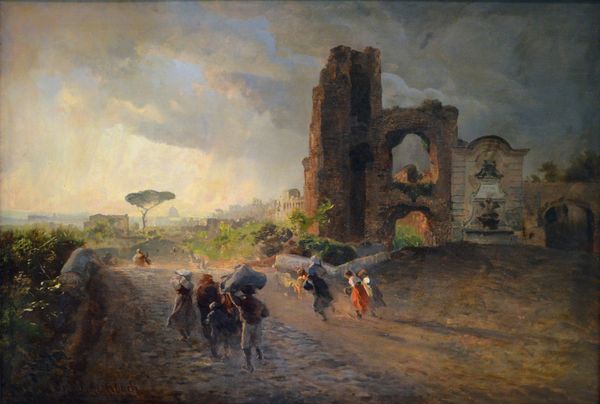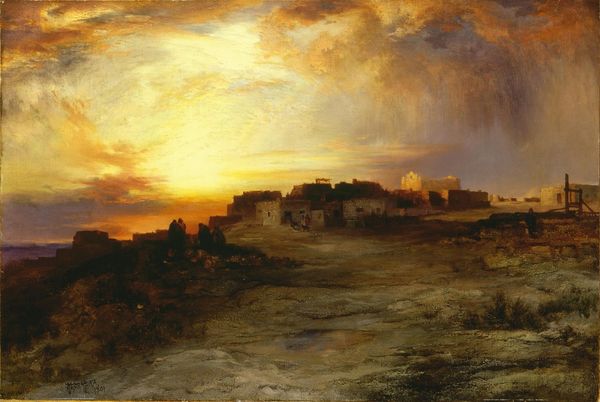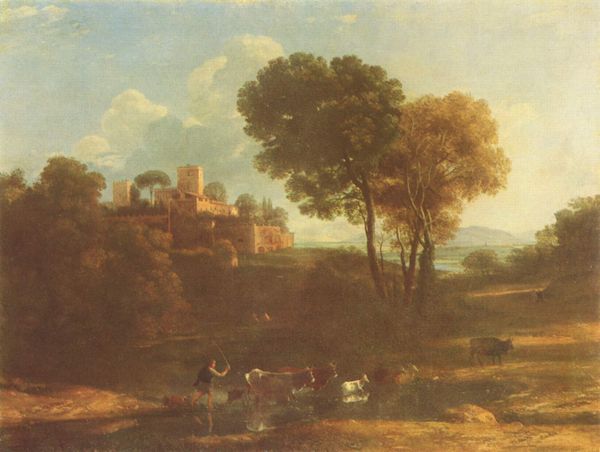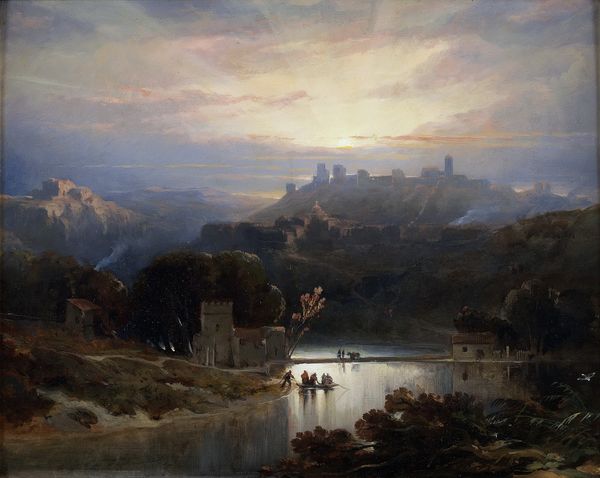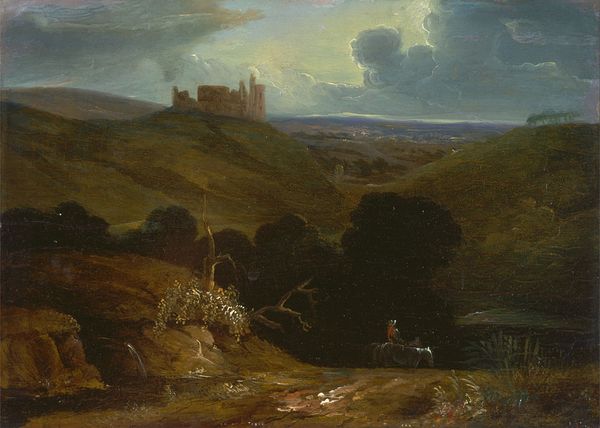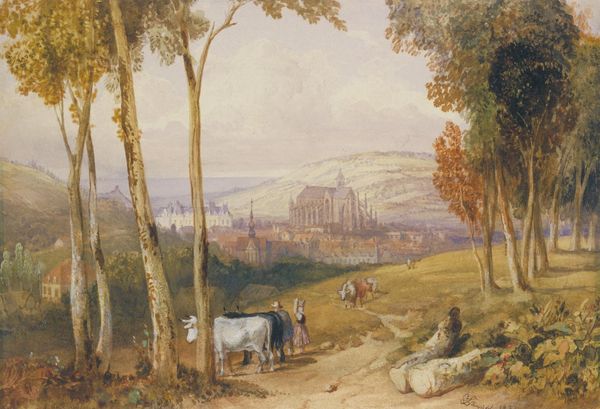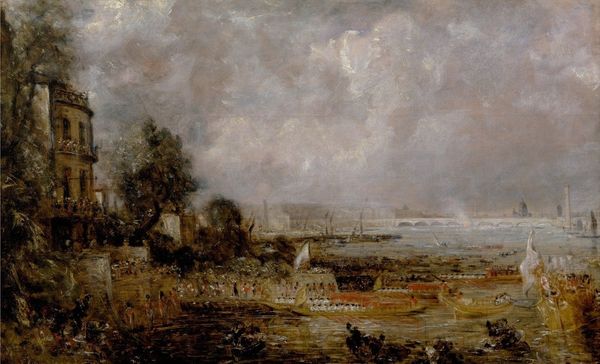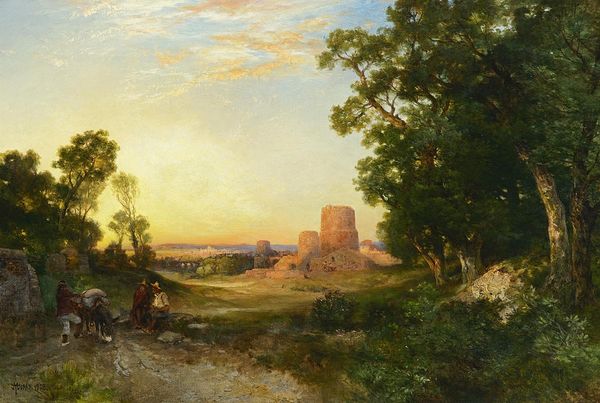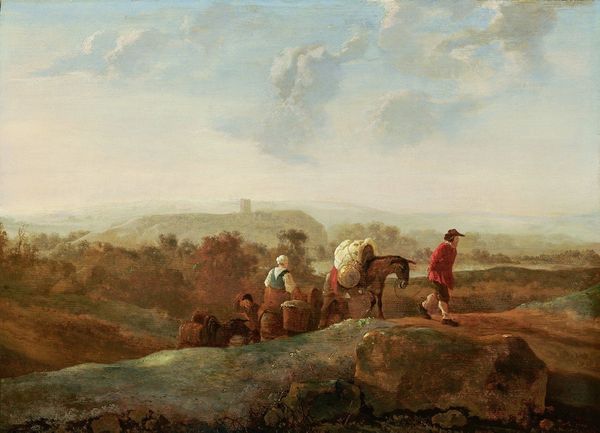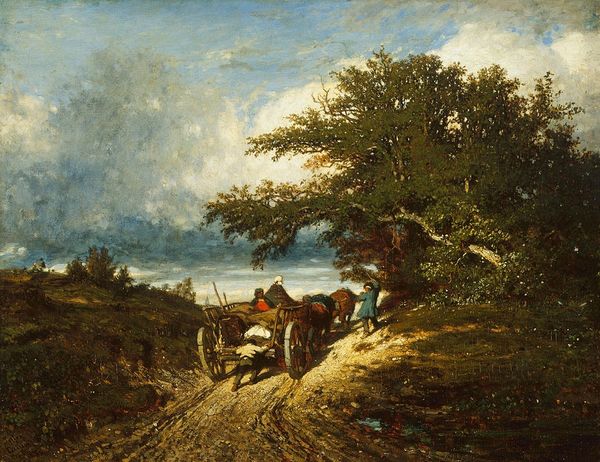
Copyright: Public domain
Curator: Oswald Achenbach's 1878 painting, "Via Cassia in Rome," offers us a glimpse into a specific place and time through the lens of 19th-century Romanticism. Editor: My initial response is to the almost cinematic quality of the light; it seems to soften the scene while simultaneously drawing our eye toward the city in the background, bathing everything in an ethereal glow. Curator: Absolutely, the luminosity contributes greatly to the painting's affect. Beyond the aesthetic beauty, the "Via Cassia"—one of Rome’s ancient roads—itself represents connection, trade, and power structures that were and continue to be intrinsic to Roman identity. We are not just seeing a landscape but witnessing a space loaded with socio-political histories. The people on the road suggest class and access disparities of the period. Editor: I agree. Achenbach masterfully manipulates our focus. Note how the receding lines of the road and the atmospheric perspective guide our gaze, creating depth and a sense of vastness, while the figures and buildings maintain very precise lines, contributing to a powerful formal dynamic. Curator: And we cannot ignore the politics inherent in Achenbach’s choice to depict Rome at this particular moment. Italy had recently unified. By capturing the beauty and historic weight of the Eternal City, he participates in constructing a narrative of national pride and perhaps a romanticized vision of its imperial past. The laborers and pilgrims become supporting players, their lives framed by a larger historical narrative. Editor: Looking at the application of paint and the visible brushstrokes, particularly in the sky and foliage, gives us a tangible sense of the artist’s hand. These textures create an almost tactile quality that further enhances the viewing experience. The chromatic harmony is a key element that gives the artwork its romantic aura. Curator: It's fascinating how even seemingly idyllic landscape paintings can be powerful statements, encoding ideologies related to nationhood, social hierarchies, and even the gaze of the colonizer, if we consider Achenbach's positioning of the "Via Cassia" in the background of his imagery. Editor: I think looking through this artwork in depth really sharpens how even simple compositions like this landscape can contain sophisticated ideas that blend historical reality and painterly fantasy.
Comments
No comments
Be the first to comment and join the conversation on the ultimate creative platform.

